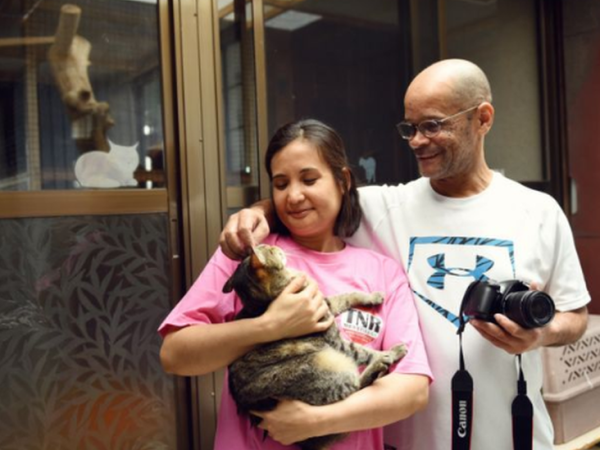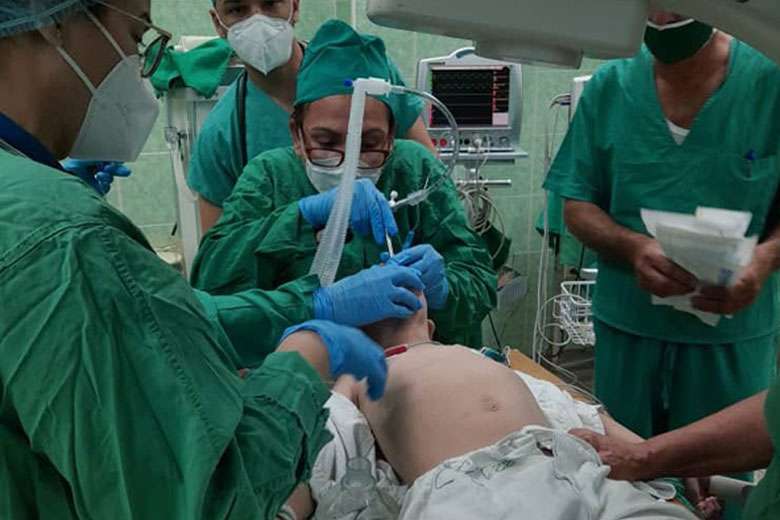In addition to captivating a record number of people, cats helped heat up the Japanese economy during the covid-19 pandemic.
According to Katsuhiro Miyamoto, a professor emeritus at Kansai University, the phenomenon he called “nekonomics” (economic effects of cats) moved about $14.6 billion (1.9 trillion yen) in the 2021 period alone.
To arrive at this high figure, the survey took into account expenses on food, basic necessities and veterinary care, as well as projects generated by the Japanese passion for cats. Even those who do not have a pet at home often go to themed cafes and tourist spots, such as islands known for their concentration of felines, just to photograph and touch the cats.
In Japan, the onomatopoeia for meowing is “nyan nyan nyan”, which sounds like “ni” (two in Japanese). Based on a play on words and at the suggestion of the pet food industry, in 1987 it was established that February 22 would be Cat Day, thus creating one more reason to increase “nekonomics”.
For many Japanese, ignoring the cat’s piercing gaze and purring is as difficult as resisting the myriad of cute items that the cat industry tends to fill the shelves with at this time of year.
According to the Japan Pet Food Association, the popularity of cats has been on the rise for more than two decades. The pandemic only caused this interest to rise further as people were forced to isolate at home.
The population of these cats registered a record in 2021, adding some 489,000 more animals compared to the previous period, which brought the total number of cats in the country to about 8.94 million (compared to 7.10 million dogs ).
Professor Miyamoto multiplied this number by the average monthly expense of US$63 (about 8,460 yen) that goes into the country for feeding and basic care of each animal. The sum reaches US$ 6,758 million per year (about 911,580 million yen)
To that amount was added the domino effect of the entire chain and what was generated by feline domestic tourism: the total was about US$14.6 billion (almost 2 trillion yen).
By way of comparison, the ‘nekonomics’ in 2021 are slightly higher than what was spent on the organization of the Tokyo 2020 Olympic and Paralympic Games (estimated at US$12.528 million or 1.69 trillion yen).
Professor Miyamoto reminds that the cost of taking care of a small cat is relatively low for a family, but for Japan it means a lot. “In other words, the accumulation of small amounts by each family contributes to the Japanese economy, it is the engine that moves the whole,” he says in an interview with BBC News Brazil.
The Japan Pet Food Association recalls that people experienced anxiety and stressful situations when they were forced to stop going out and had to stay at home and work from there for a long time. When living with pets, they seek peace of mind and improve communication within their family.
The easing of the measures to combat the coronavirus and the recent price increases for a series of products and the energy tariff in the country should have an impact on ‘nekonomics’, but it is too early to say how much it will be.
What cannot be ignored is that there will always be an increasing number of pet lovers in Japan. Dog or cat, the choice will depend a lot on the space and time available for their care.
In the study, Miyamoto lists a series of factors why the Japanese prefer felines.
Among them, he mentions that more and more people are moving to urban apartments that, in addition to being overcrowded, often do not allow dogs, but may overlook the presence of cats, which are also easier to care for and require less attention, such as have to take them for a walk.
However, not all cats are welcome. According to a survey conducted by Japan’s Ministry of the Environment, in fiscal year 2020, the number of cats taken from their owners to be put up for adoption reached about 10,000.
The NGO TNR Felinos Japón, created by Elen Tanaka and Cássio Silva, in Iwata (Shizuoka province), serves as a thermometer to assess this situation of abandonment. The Brazilian couple has noticed an increase in feline colonies, including the presence of domestic animals alongside the traditional stray cats.
After the initial enthusiasm, many people give up on the kitty realizing that caring for an animal, even a small cat, takes work and costs money. Thus, they end up abandoning the animals and the account ends up being transferred to those who are dedicated to giving shelter to these animals.
Cássio says that the expenses of that organization have increased a lot. Currently, he and his wife pay about US$963 (130,000 yen) to rent two properties: one serves as a home for the couple and the other houses 100 cats that were rescued, neutered and cared for by both while they await adoption.
Rent is the smallest part of the expenses to support so many felines. In addition to absorbing Cássio’s salary as a worker in an auto parts factory, the NGO consumes all the time caring for his wife Elen, since many animals arrive weakened from the street.
In the end, there are almost US$5,000 (680,000 yen) of monthly expenses that must be covered with juggling, campaigns and the goodwill of friends and supporters of the cause. “When I left Brazil 22 years ago, I said it was to work and earn money in Japan. But we collect cats! Today, they are the ones who give meaning to our lives,” says Cássio.
For those who intend to share the same sentiment, it is not enough to like animals to be able to keep those that have been collected by the NGO. If the place where you live does not allow the presence of cats, the adoption is denied.
There is also a commitment period and numerous procedures in place to prevent the animal from being returned or abandoned again.
Conrado Areco Borelli passed the selection and managed to adopt Tigrão and Pompom. Currently, his family cares for three cats, with whom they spend an average of US$148 (about 20,000 yen) on food, litter and cleaning products. When he needs to take the kittens to the vet, the amount doubles.
More than the extra expenses for medical attention, rent is what bothers Brazilians the most. Many owners have become flexible with the presence of animals, but charge a little more for it. “But it’s worth every penny to have our cats with us, living in peace,” he says.
The financial firm R&C Co. interviewed 3,000 cat owners at the end of December 2022 and found that the average cost of caring for an animal is US$19,572 (2.64 million yen) over 15.6 years of life (average estimated by the Japan Pet Food Association).
“With this research, we want to help reduce the number of cats abandoned for economic reasons. By knowing future expenses in advance, people will be able to consciously decide whether or not to have the animal,” they point out.
In Sumirê Shimizu’s opinion, what impacts “nekonomics” the most is not so much the ownership of the animal. The Brazilian believes that there is an industry that takes advantage of this unconditional passion and profits from it.
Sumirê liked big dogs, but since it was impossible to have them in her apartment in Tokyo, she ended up adopting Harumaki and Dorayaki, two cats that she gave names based on these Japanese foods.
It is believed that the first cats came to Japan from China during the Nara period (8th century) to hunt mice. From the Heian period (8th to 12th centuries) they began to be considered pets, being portrayed in Ukiyo-e works and classics of Japanese literature, such as the novel “I am a cat”, by the writer Natsume Soseki.
At the same time dogs arrived, being the first of the Chin breed, brought as a gift from the rulers of Korea. Due to their small size and friendly temperament, they soon became house pets.
Although they have been losing physical space in cat homes, dogs are still revered for their glorious past (as seen in the statue next to the last samurai Saigo Takamori) or for the remarkable loyalty shown by Hachiko, the dog immortalized in the cinema. and sculpted in bronze at the Shibuya train station in Tokyo. In that same place, the animal waited more than nine years after the death of its owner.
The Japanese Yoichiro Matsushita is not impressed by these canine characteristics. His passion is cats, with their rebellious and independent character. “I don’t have the burden of walking with them either,” he adds.
The first to arrive at Matsushita’s home was an abandoned cat that his wife found outside an acquaintance’s store 40 years ago. After that, whenever one died, someone would bring a replacement.
He currently cares for Lara and Kiki, who arrived as puppies and are recognized as members of the family. “And they don’t ask for clothes and I don’t even have to take them to school.” Matsushita often sleeps and talks with her cats, though she admits they don’t always get along so well.
Now you can receive notifications from BBC News World. Download the new version of our app and activate them so you don’t miss out on our best content.

















